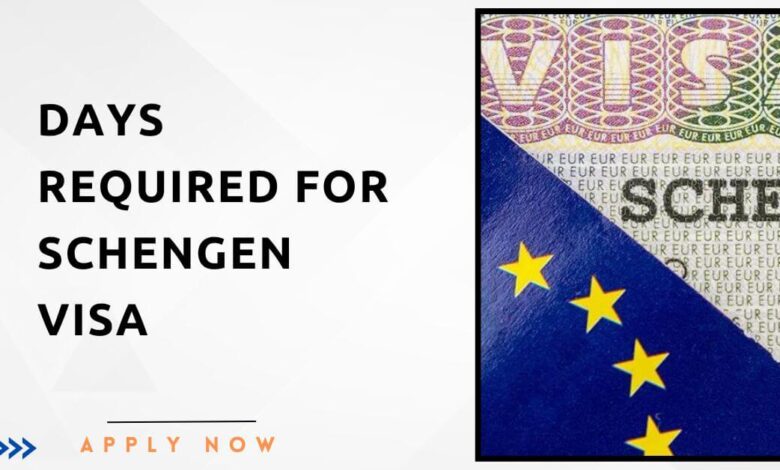Days Required For Schengen Visa – Fully Guide

It is important to know how to get a Schengen visa if you want to travel to Europe. People who are planning to travel often want to know how long it takes to apply for a Schengen visa. It tries to explain how to apply for a Schengen visa by giving a full list of all the papers and dates that are needed.
Check Also: Norway Work VISA Without an Agent – How to Get
How Many Days Are Required For a Schengen Visa?
The processing of your Schengen visa will require a minimum of 15 days, but the exact time frame will be contingent upon your circumstances. The processing of a visa may require up to 30 days in some countries. In extremely uncommon instances, the processing of a Schengen visa may require up to 60 days.
Factors Affecting Visa Processing Time:
- Embassy or Consulate Workload: The duration of the visa processing procedure can be influenced by the volume of work being conducted at the embassy or consulate where the application is submitted. Due to the high volume of applications, processing times may be extended during periods of high travel demand, such as the summer or holidays.
- Completeness of Application: The submission of a complete and accurate visa application that includes all required documentation can expedite the process. The embassy or consulate personnel may require additional information, which could result in delays if your application is incomplete or certain documents are missing.
- form of visa: The timeframes may also be influenced by the form of Schengen visa you are applying for. Although we can process the majority of short-stay visas within a few weeks, certain types, such as student visas or visas that necessitate additional attention, may require a longer processing time.
- Country of Application: The duration of the Schengen visa application process may vary depending on the country from which it is submitted. It is conceivable that certain embassies or consulates have more efficient procedures or reduced wait times than others.
Tips To Expedite The Visa Process:
- Submit your application in advance: Applications for visas should be submitted well in advance of the intended travel date, particularly during periods of high demand.
- Furnish Comprehensive Documentation: Ensure that the application contains all the requisite materials, including a copy of your passport, your travel plans, proof of your accommodation, and evidence of sufficient funds.
- Follow Instructions Carefully adhere to the instructions provided by the embassy or consulate regarding the application process, including the type of photo and fee.
- Consider Premium Services: Certain consulates and offices charge additional fees for services that speed up document processing. Individuals who require expedited visa processing may opt for these premium services.
Conclusion:
The exact time it takes to get a Schengen visa depends on a variety of factors, such as how busy the embassy is and how complete the application is. However, planning and following these tips can speed up the process. Travelers can ensure a smooth trip to the Schengen Area by knowing the rules and giving themselves plenty of time to get their visas processed.
Frequently Asked Questions:
How do you count days on a Schengen visa?
The 90/180-day allowance is a rolling period that begins on the date of your most recent arrival in Schengen. When calculating how long you have left to remain, you should count your days in the Schengen Area in the 180 days before your latest arrival.
What is the Schengen Days Rule?
Non-EU nationals need a visa to enter the Schengen area for a visit of up to 90 days in any 180 days. When someone enters a country in the Schengen area, the 180-day period starts. They can enter Schengen area countries as many times as they want, but they only stay for a total of 90 days every 180 days.
What is the 3-month Schengen rule?
A passport issued within the previous 10 years and valid for at least three months after the intended date of departure from the Schengen area.



